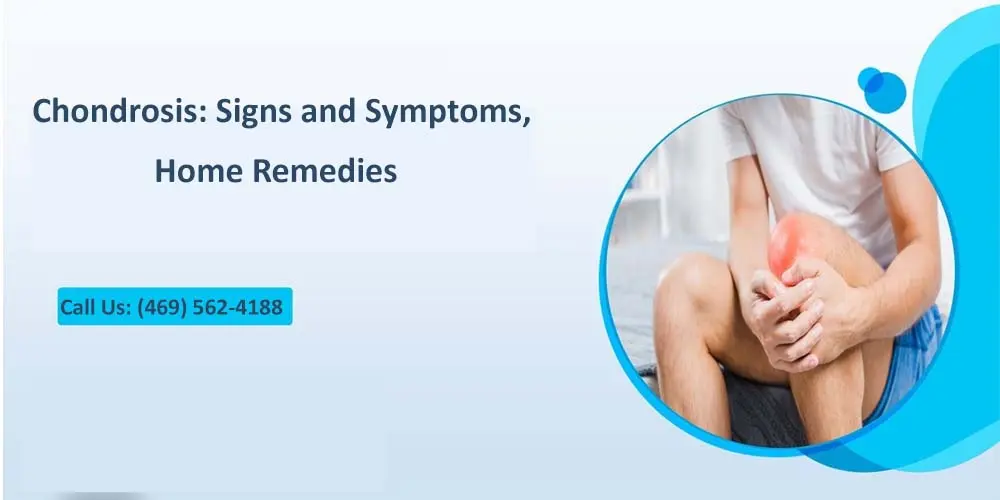Chondrosis, which means “cartilage breakdown,” happens when joint cartilage is worn down by age, injury, or too much use. Chondrosis, also known as osteoarthritis, causes pain and stiffness in the knees, hands, hips, neck, and lower back. Chondrosis can’t be cured, but treatment can slow its progression, relieve pain, and restore mobility. Outpatient arthroscopic chondromalacia surgery is performed by an orthopedic surgeon. If the damage is severe, an open knee procedure may be needed and an overnight stay in the hospital.
Medicine and Supplements To Treat Chondrosis
Medication is used with other non-surgical treatments to reduce mild to moderate chondrosis joint pain.
OTC Drugs
Your pain physicians in Dallas may prescribe over-the-counter painkillers like acetaminophen and oral or topical NSAIDs. ACR advises topical NSAIDs before oral use. The goal is to try a local route before a systemic one. Capsaicin-containing knee creams may temporarily relieve knee osteoarthritis pain. The ACR recommends topical capsaicin for knee osteoarthritis.
The ACR guidelines advise against topical use for hand osteoarthritis due to a lack of evidence and a risk of getting the medication into the eyes through the hands. Tramadol and duloxetine are approved osteoarthritis medications. The ACR now recommends corticosteroid injections into hand, hip, or knee joints.
Supplements
For chondrosis, your doctor may recommend vitamin K and calcium supplements. The benefits may take two to three months to appear. Glucosamine and chondroitin are popular U.S. dietary supplements for bone and joint health. Glucosamine and chondroitin are not effective in treating hip or knee osteoarthritis, so they are discouraged. Hand osteoarthritis may benefit from chondroitin supplements.
Chondromalacia Surgery
Chondromalacia surgery removes damaged cartilage by skilled orthopedic surgeons. The surgery removes or repairs knee cartilage and tissue. Surgery can be done via arthroscopy or open knee surgery. The orthopedic surgeon will decide based on damage severity. Arthroscopy is the most common day surgery with minimally invasive techniques. An osteotomy may be needed to align the knee with the thigh bone and shinbone. The tibia or femur is cut during an osteotomy. A bone is reshaped to relieve pressure on damaged cartilage and prevent knee complications.
The surgeon may make an open knee incision for an osteotomy, but a high tibial arthroscopic osteotomy is possible. Some patients require overnight hospitalization.
Chondromalacia Surgery Goal
Chondromalacia patellae, or “runner’s knee,” occurs when the patella’s undersurface cartilage softens. The kneecap may rub against the femur, causing pain. Chondromalacia is a sports overuse injury. Resting reduces pain and injury risk. Resting doesn’t always help improper knee alignment. Chondromalacia surgery is rarely recommended for this diagnosis. Your doctor will recommend less invasive methods first:
- RICE: Rest, ice, compress, elevate. Initially, this will be recommended for chondromalacia injuries. This will ease the pain, swelling, and discomfort, but it won’t get rid of the cause. Following your doctor’s advice is crucial.
- Painkillers and anti-inflammatory medications: Your doctor may suggest NSAIDs and other medications to alleviate pain and inflammation.
- Physical therapy: Therapists will guide you through exercises and range of motion to strengthen muscles and joints.
- Taping the patella can reduce pain by preventing the kneecap and sore spot from rubbing together. Tape on either side of the knee guides and corrects patella movement. Patella taping requires medical and/or physical therapy supervision.
- Several preoperative studies are required by your surgeon. This includes:
- X-ray: This can rule out inflammation or arthritis.
- Blood tests check hemoglobin and electrolytes.
- Arthroscopy: determining knee cartilage condition.
- MRI: This shows the knee and surrounding joints best. It usually confirms chondromalacia patella best.
How to Prepare for Surgery?
Discuss surgery details and postoperative care with pain management in Dallas. Having realistic surgery expectations is key to success. Communicate with your surgeon before surgery. Please contact your healthcare provider if you have any questions or concerns about chondromalacia surgery. A fever, flu, cold, or COVID-19 symptoms precede the procedure.
Location
Your surgeon’s preference and baseline health determine whether chondromalacia surgery is done in the hospital or outpatient. Most patients recover in the postanesthesia care unit and go home. Some must stay at least one night in a medical-surgical unit.
What to Wear?
This procedure’s most crucial tip is to dress comfortably. Doctors advise wearing loose clothes to and from the hospital. Due to IVs, catheters, drains, and multiple knee incisions, most patients wear hospital gowns after the procedure. When out of bed, always wear non-skid shoes.
Food
Before surgery, stop eating and drinking. Not-for-profit means “nothing by mouth.” Following NPO guidelines is very important if you don’t want your surgery to be canceled. The surgical team determines the time for each patient. A preoperative appointment will provide this information, and a reminder call the day before the procedure will provide it. Take only the medications your doctor prescribes the morning of surgery. Take them with enough water to swallow. Only take medications with water after consulting your surgeon.
Conclusion
Chondromalacia surgery can be overwhelming because it will affect your ability to walk, drive, and care for yourself. Success after surgery requires close friends and family support. Consult your doctor about nonoperative treatments for chondrosis like rest, ice, NSAIDs, and physical therapy before surgery.


